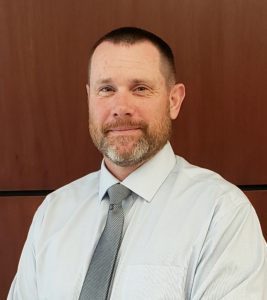By Michael Ginalski
 In March, hundreds of NYS School Superintendents will gather in Albany for their annual winter conference. The front and center issue above everything else for Superintendents this March is the Governor’s 2025 budget and the elimination of the hold harmless law which dictates that districts will not receive less Foundation Aid than the previous year. Many districts in NYS are receiving less aid than in the year prior which is creating historic budget challenges in many of these districts. In addition, most if not all of these districts are in various stages of facilities planning which creates questions relative to how to proceed IF your 24-25 school budget is difficult or controversial. Based on my experience, I would beg and plead with Superintendents to continue to plan regardless of where their 24-25 budgets land.
In March, hundreds of NYS School Superintendents will gather in Albany for their annual winter conference. The front and center issue above everything else for Superintendents this March is the Governor’s 2025 budget and the elimination of the hold harmless law which dictates that districts will not receive less Foundation Aid than the previous year. Many districts in NYS are receiving less aid than in the year prior which is creating historic budget challenges in many of these districts. In addition, most if not all of these districts are in various stages of facilities planning which creates questions relative to how to proceed IF your 24-25 school budget is difficult or controversial. Based on my experience, I would beg and plead with Superintendents to continue to plan regardless of where their 24-25 budgets land.
In 2010, I was the Superintendent of a district that was very conservative in terms of facilities planning because of their repeated annual budget quandaries for 20+ years. Any facilities work in this district was minimal at best during this time because of the fear of major planning during a bad school budget era. When I became Superintendent, not only was I faced with a $400M plus Building Condition Survey (BCS) but a $10.7M budget deficit because of the federal recession and 13 buildings that needed a lot of work. We ultimately worked through our annual budget difficulties and solved our facilities issues. During that time, had we stopped or been thwarted by the politics of our annual budget, that $400M BCS could have become a $600M BCS in the blink of an eye. In looking back at that work, having our facilities team, Construction Manager (CM), and A/E firm from the start made all the difference and we managed the politics together.
Below are some considerations for districts to proceed with planning during a difficult budget year.
Hire a Full-Service CM and Architect at the Start of Pre-Ref Planning.
At Welliver, we are well versed in working at the front end of projects to ensure SD planning not only reflects the customer’s vision but also ensures that cost estimates are in line with the project scope. Some districts don’t hire a CM until the project is developed. This is a mistake.
Stick to the BCS – Identify Priorities.
The BCS generally reflects basic infrastructure needs and the cost of those items. Within that, there needs to be constant dynamic conversation at the table amongst district personnel, architect, and CM. Welliver personnel work with the architect to assess key priorities. High priorities should be the focus.
Be Mindful of Politics and the Intersection of School Budget Decisions with Facilities Planning.
If your district has a contentious budget vote or significant cuts in the teaching ranks this is probably not the time to build that shiny new high school gym facility. Basic infrastructure type improvements or specific educational improvements can generally be understood by the public. However, in a bad budget “time” focus on needs … and limit wants.
Hire a Full-Service CM.
A full-service CM takes responsibility for all of the planning and day to day operations of a construction site. This includes early budgeting, conceptual scheduling, and existing facilities analysis. A full-service CM helps your project stay on schedule, makes it more affordable, and allows for greater quality control. Welliver is a full-service CM. Having us on board from start to finish can save districts money because of the work alongside the architect.
Utilize your CM’s Estimating Department during SD.
There’s the adage about “over promising and under delivering.” At Welliver, we urge our clients to utilize our estimating department during project design/pre-ref to ensure estimates are as tight and accurate as possible from the start. Our project managers are very adept at recognizing what parts of a project may need a second look prior to a facilities vote. The last thing a district needs is to promise various aspects of a plan to the public and following a vote they are forced to value engineer important elements out of a project. It’s a bad look and leads to a loss of confidence and trust.
Do Not Plan your Facilities Vote for May.
A contentious budget can lead to “no” votes for various reasons. Putting a facilities vote up at the same time as your budget vote is a recipe for failure as it provides those same people an avenue to vote no twice.
Managing the Electric Bus Mandate.
Welliver personnel recently attended an event with local politicians to discuss the NYS mandate for all districts to move to electric vehicles. While this mandate is overwhelming districts in terms of its complexity, planning needs to begin now in terms of building the infrastructure in each district in order to support the move to electric vehicles. 2027 and 2035 will be here quickly and prepping for this in the current facilities planning cycle is a must, whether your 24-25 budget is challenging or not.
What a district doesn’t fix today will just compound. We’ve all heard of the example of the school roof which has been patched over and over, well past its expected warranty date. Before long, those patches no longer hold and the water gets inside and walls, ceilings, floors, and equipment become damaged. That cost to replace the roof becomes a much more expensive project as a result. While the politics of a bad budget year can be managed, the costs of what you choose to not fix today cannot and the district is doing its community no favors in the long run. Proper upfront planning and project development is a must. At Welliver, we have the expertise and experience to help a district navigate those challenges and find success.
Mike joined Welliver as our K12 Communication Liaison after 33 years working in the K12 education sector. He brings a comprehensive understanding and direct exposure to all of the issues facing public education today. In his 13 years as the Superintendent in Corning-Painted Post (CPP) Area School District, Mike led the district through four successful referendums which led to $260M in new construction from 2010-2020. Mike bridges the gap between Welliver’s construction management teams and K12 school district superintendents, school boards, and facility directors. He provides expertise and guidance, as well as helps districts carry out capital improvement initiatives involving pre-referendum voting, budget management, community outreach, and buildings and grounds personnel. Mike can be reached at [email protected].
 When I was on the verge of taking over my family business, I received some professional advice. As the incoming President I should make a couple big moves or changes to display my leadership as well as to make sure everyone knew I meant business. While I understood the strategy behind these thoughts, I knew that the one thing I didn’t want to mess with at Welliver was our culture. We have not been around for five generations and 125 years because we made drastic changes. We have persevered because my forefathers chose to live by several key principals, and I live by these same principals in my tenure as President. Work hard, take care of your people, always do the right thing, give more than you receive, and always hire people smarter than you.
When I was on the verge of taking over my family business, I received some professional advice. As the incoming President I should make a couple big moves or changes to display my leadership as well as to make sure everyone knew I meant business. While I understood the strategy behind these thoughts, I knew that the one thing I didn’t want to mess with at Welliver was our culture. We have not been around for five generations and 125 years because we made drastic changes. We have persevered because my forefathers chose to live by several key principals, and I live by these same principals in my tenure as President. Work hard, take care of your people, always do the right thing, give more than you receive, and always hire people smarter than you. 





 In March, hundreds of NYS School Superintendents will gather in Albany for their annual winter conference. The front and center issue above everything else for Superintendents this March is the Governor’s 2025 budget and the elimination of the hold harmless law which dictates that districts will not receive less Foundation Aid than the previous year. Many districts in NYS are receiving less aid than in the year prior which is creating historic budget challenges in many of these districts. In addition, most if not all of these districts are in various stages of facilities planning which creates questions relative to how to proceed IF your 24-25 school budget is difficult or controversial. Based on my experience, I would beg and plead with Superintendents to continue to plan regardless of where their 24-25 budgets land.
In March, hundreds of NYS School Superintendents will gather in Albany for their annual winter conference. The front and center issue above everything else for Superintendents this March is the Governor’s 2025 budget and the elimination of the hold harmless law which dictates that districts will not receive less Foundation Aid than the previous year. Many districts in NYS are receiving less aid than in the year prior which is creating historic budget challenges in many of these districts. In addition, most if not all of these districts are in various stages of facilities planning which creates questions relative to how to proceed IF your 24-25 school budget is difficult or controversial. Based on my experience, I would beg and plead with Superintendents to continue to plan regardless of where their 24-25 budgets land. Today’s construction industry is rapidly moving into the technological age. Twenty-five years ago, it was unheard of to have a computer on the jobsite. At that time the cell phone and fax machine were just making its way onto projects leaving the two-way radios on the charging stations and eliminating trips to the post office to get your weekly paperwork turned in.
Today’s construction industry is rapidly moving into the technological age. Twenty-five years ago, it was unheard of to have a computer on the jobsite. At that time the cell phone and fax machine were just making its way onto projects leaving the two-way radios on the charging stations and eliminating trips to the post office to get your weekly paperwork turned in. Have you ever thought about starting a career, learning a new trade, creating the dream job meant just for you? Have you ever had the great career, the dream job, the comfortably-reliably learned trade and been forced to reassess those ideals? This is what happened to me and how I ended up working in construction with Welliver. I created a career for myself in the customer service industry as a travel consultant, working with corporate travelers, leisure travelers, “the money is no object” traveler, and the “which hotel has the most for my buck” traveler. It was all about customer service and the rapport I created with my clients offering confidence and commitment, showing them they were my priority. I worked hard to establish myself as a top consultant who would work to create the adventure, get you to your next meeting, or should circumstances not go as expected, you knew who to call for assistance. Then as you know on March 15, 2020 the world shut down and took us all with it. The COVID pandemic rocked the travel industry to its very core. People were no longer looking for adventure. They weren’t worried about their next meeting or which beach had the best shells. They were worried about surviving. This is how I came to reassess what I thought was a lifetime career choice.
Have you ever thought about starting a career, learning a new trade, creating the dream job meant just for you? Have you ever had the great career, the dream job, the comfortably-reliably learned trade and been forced to reassess those ideals? This is what happened to me and how I ended up working in construction with Welliver. I created a career for myself in the customer service industry as a travel consultant, working with corporate travelers, leisure travelers, “the money is no object” traveler, and the “which hotel has the most for my buck” traveler. It was all about customer service and the rapport I created with my clients offering confidence and commitment, showing them they were my priority. I worked hard to establish myself as a top consultant who would work to create the adventure, get you to your next meeting, or should circumstances not go as expected, you knew who to call for assistance. Then as you know on March 15, 2020 the world shut down and took us all with it. The COVID pandemic rocked the travel industry to its very core. People were no longer looking for adventure. They weren’t worried about their next meeting or which beach had the best shells. They were worried about surviving. This is how I came to reassess what I thought was a lifetime career choice. As we ease out of the COVID pandemic, the construction industry is experiencing a deficit of workers and this trend is posing a serious challenge for construction companies. People working in the trades are asking the million dollar question, “where did everyone go?” Speculation includes a wave of retirements, career changes, COVID-19 death and illness, and even building tiny homes on wheels and heading out to the west coast are rumored to be contributing factors. According to a model developed by the Associated Builders and Contractors, the construction industry will need to attract nearly 650,000 additional workers on top of the normal pace of hiring in 2022 to meet the demand for labor. It is mind boggling.
As we ease out of the COVID pandemic, the construction industry is experiencing a deficit of workers and this trend is posing a serious challenge for construction companies. People working in the trades are asking the million dollar question, “where did everyone go?” Speculation includes a wave of retirements, career changes, COVID-19 death and illness, and even building tiny homes on wheels and heading out to the west coast are rumored to be contributing factors. According to a model developed by the Associated Builders and Contractors, the construction industry will need to attract nearly 650,000 additional workers on top of the normal pace of hiring in 2022 to meet the demand for labor. It is mind boggling. In an article that appeared in the March 28, 2022 issue of McKinsey & Company’s “Bridging the labor mismatch in US construction”, U.S. based construction projects are short-staffed today, and the problem is set to get worse over the next ten years.
In an article that appeared in the March 28, 2022 issue of McKinsey & Company’s “Bridging the labor mismatch in US construction”, U.S. based construction projects are short-staffed today, and the problem is set to get worse over the next ten years. Recently I had the opportunity to spend an afternoon with a gentleman who had expressed an interest in a career change to construction safety. This man had spent significant time in another field very different from the construction industry. He stated that he was looking for a new challenge in his life and has always been fascinated watching construction projects progress from a distance and thought he would like to become part of the process. Bringing a strong belief in safety, his goal is to embrace a role in this field. I had been asked to spend time and explain the responsibilities of a safety manager and point out what to look for during a site visit. I also wanted to explain how a safety manager communicates and works with site leaders and personnel to facilitate a safe work site. Being new to my role at Welliver, I was excited to bring a fresh perspective to our discussion.
Recently I had the opportunity to spend an afternoon with a gentleman who had expressed an interest in a career change to construction safety. This man had spent significant time in another field very different from the construction industry. He stated that he was looking for a new challenge in his life and has always been fascinated watching construction projects progress from a distance and thought he would like to become part of the process. Bringing a strong belief in safety, his goal is to embrace a role in this field. I had been asked to spend time and explain the responsibilities of a safety manager and point out what to look for during a site visit. I also wanted to explain how a safety manager communicates and works with site leaders and personnel to facilitate a safe work site. Being new to my role at Welliver, I was excited to bring a fresh perspective to our discussion.